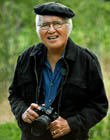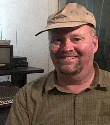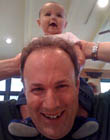|
|
This topic comprises 6 pages: 1 2 3 4 5 6
|
|
Author
|
Topic: What is a roadshow release?
|
|
|
Manny Knowles
"What are these things and WHY are they BLUE???"

Posts: 4247
From: Bloomington, IN, USA
Registered: Feb 2002
|
 posted 08-16-2002 11:54 PM
posted 08-16-2002 11:54 PM




Yes it is indeed different.The distributor hires special equipment and a team of installation/operation personnel and they tour with the movie. "Let's get this show on the road" (when used literally) = "Roadshow." ~Manny (not just for breakfast anymore.)
| IP: Logged
|
|
Claude S. Ayakawa
Film God

Posts: 2738
From: Waipahu, Hawaii, USA
Registered: Aug 2002
|
 posted 08-17-2002 12:09 AM
posted 08-17-2002 12:09 AM





Adam, Road show presentations was a special exclusive showing of a film in a major city and tickets were obtained exactly the same way as concert tickets are sold today. All seats were reserved and you were able to buy tickets weeks in advance and select the seats you want. Road shows have been around for a very long time. "GONE WITH THE WIND", "DUAL IN THE SUN", "QUO VADIS". "SAMSON & DELILAH" and "THE GREATEST SHOW ON EARTH" are some of the earlier ones I remember when I was a kid. All of the earlier 70mm films with the exception of Disney's "SLEEPING BEAUTY" were all presented as road shows starting with "OKLAHOMA' and followed by "AROUND THE WORLD IN 80 DAYS" and so many others. THe last road show presentation I remember was "TORA! TORA! TORA! in 1970. All of the Cinerama films and the last two from MGM were also road show pictures. All road show films started with an overture. Than there was the entre'acte, a music segment after the intermission and music when people left the theatre. The music track was on opaque film and played behind a closed curtain. One of the pet peeve I have when these wonderful road show pictures are released to home video are those stupid titles cards that reads "OVERTURE" during that segment, "ENTR'ACTE" during the intermission music and "EXIT MUSIC". These title cards were not part of the original theatrical presentation and I feel it only takes away the mood of the film in my opinion. After the film had completed it's reserved seat engagements, it was released to regular theatres at popular prices a few months later. When the film went into general release, some projectionist did play the film exactly as the way they were presented during it's road show engagement because all general release prints were not edited except for some films such as "IT'S A MAD, MAD, MAD, MAD WONDERFUL WORLD", "THE ALAMO" and a few others when their original running time was cut to accommodate exhibitors who wanted to schedue more shows during it's general engagements or for some other reasons. If the management and the projectionis lacked true true showmanship, all of the opaque footage with the music and the intermission title card was removed and the film was presented without any pause. The Waipahu, my favorite neighborhood theatre in my home town always played road show films exactly as the way they were originally presented and this made me very happy. -Claude
| IP: Logged
|
|
Paul Mayer
Oh get out of it Melvin, before it pulls you under!

Posts: 3836
From: Albuquerque, NM
Registered: Feb 2000
|
 posted 08-17-2002 12:12 AM
posted 08-17-2002 12:12 AM





Hmmm. Here's one example of the differences between roadshow and regular version of one film I've run both ways--2001:Roadshow version: 70mm 6-track mag
No trailers, no rolling stock
Overture music
An intermission
Entr'acte music
Extended version of Blue Danube walkout music for several minutes after the end of the credits
Limited release with hard ticketing/reserved seating
Theatre program booklets available
Usually some sort of related display in the lobby Regular version: 35mm 'scope
Optical sound (I guess there were mag/op prints too)
Trailers and/or rolling stock
No overture
No intermission, hence no entr'acte music
Blue Danube music cuts off right after end of credits
Wide release, general or open seating, no reservations
No theatre programs, no lobby displays This is just one example. For other films I'm sure the differences were different. Paul
| IP: Logged
|
|
|
|
|
|
Mitchell Cope
Master Film Handler

Posts: 256
From: Overland Park, KS, United States
Registered: Jun 99
|
 posted 08-17-2002 07:00 AM
posted 08-17-2002 07:00 AM




For a roadshow produced by Mike Todd (e.g., "Oklahoma!", "Around The World In 80 Days"), special Todd-AO theaters were not allowed to sell popcorn for those special engagements. It was not uncommon for a good roadshow engagement to last a year or more. I remember "South Pacific" playing at the Wynnewood Theatre in Dallas for at least a year. I think the "Sound of Music" played at the Inwood Theatre for at least 18 months, maybe longer.It would not be uncommon, especially back in 1950s, to see people dress up for a showing, even on a Saturday afternoon. Since roadshow engagements were limited to your larger cities, I am sure that a lot of people may have had to travel an hour or two to see the film. My favorite roadshow engagements included: "Oklahoma!"
"South Pacific"
"Ben-Hur"
"My Fair Lady"
"Mutiny On The Bounty"
"Windjammer"
"It's A Mad, Mad, Mad, Mad World"
"Doctor Zhivago"
"The Sound of Music"
"Hawaii"
"The Sand Pebbles"
| IP: Logged
|
|
Mark Lensenmayer
Phenomenal Film Handler

Posts: 1605
From: Upper Arlington, OH
Registered: Sep 1999
|
 posted 08-17-2002 07:46 AM
posted 08-17-2002 07:46 AM




The whole point of a roadshow presentation was to emulate the traditional live theatre experience. There would usually be reserved seat tickets that sometimes had to be acquired weeks in advance. Tickets were usually a bit more expensive for these presentations, and people often did dress up.One would usually be greeted by an uniformed usher and escorted to seats. There might be a free "Playbill" type program, and usually a larger program was available in the lobby. The picture would usually start with an overture, with slightly dimmed lights and a closed curtain. Then the performance would start with the lights dimming completely out and the often huge image taking over the screen. There was almost always an intermission, with Entr'Acte music played usually a minute or two before the picture restarted, and exit music played after the picture ended (also like a traditional Broadway musical). So, going to a roadshow presentation was a REALLY big deal. People planned these visits around birthdays and other holidays. Almost all 3-Strip CINERAMA presentations were Roadshows. With the first one THIS IS CINERAMA, they even used the trick of having a very bland overture, then starting the presentation with Lowell Thomas on a very small screen. When Lowell said, "THIS IS CINERAMA" the giant screen kicked in, the full stereo started up and away it went. In 1952, this was an amazing thing. Roadshows died out in the '70's, as the movies moved to the suburbs. It's something a lot of us miss.
| IP: Logged
|
|
|
|
|
|
|
|
|
|
|
|
Paul Linfesty
Phenomenal Film Handler

Posts: 1383
From: Bakersfield, CA, USA
Registered: Nov 1999
|
 posted 08-17-2002 01:01 PM
posted 08-17-2002 01:01 PM




Actually, while HAWAII's 70mm roadshow prints were mag striped, there has been much discussion, in various forums, of this film being a mono mix, both in 70mm and 35mm. Apparently, there have been other 70mm films that also were mono mixed, or even 4-track, instead of the usual 6-track. This doesn't change the basic mag stripe positions on the print, though. They were needed to provide balanced prints and to run through the mag soundheads properly.
| IP: Logged
|
|
Ian Price
Phenomenal Film Handler

Posts: 1714
From: Denver, CO
Registered: Jun 99
|
 posted 08-17-2002 01:02 PM
posted 08-17-2002 01:02 PM




I was able to run Lawrence of Arabia in 1990 as a Road Show for 8 weeks. We had two showtimes per day at 2:00 and 7:00. We had 1 1/2 hours between the showings. We sometimes sold out the 7:00 PM show at 6:00 PM. We did not have reserved seats and we only had 630 seats. We ran the intro music and the intermission music and the walk out music with our theatre curtain closed. The first image would hit the screen and I would hit the curtain switch. During intermission, which occurred right after Lawrence crossed a desert, entered the officer's club and orders "Two Lemonades", I used to drain both sides of a five-gallon bubbler full of lemonade. I loved running that movie. We ran Lawrence of Arabia in 70mm with a Ballantyne Pro 35/70, Potts 35/70 platter, Strong lamphouse in ORC orange? (Might have been a prototype) We had a CP200 with Hafler amps (They kept blowing over the years), JBL speakers (unfortunately with homemade surrounds) we used to sub bass cabinets for the left and right extra channels. And finally, I am ashamed to admit, we had to use a magnacom for the lens. The Ballantyne has gone to projector purgatory and was replaced with a Century JJ. The Haflers have all died and were replaced with QSC MX1500s. The platter keeps ticking over and the speakers are the same. I hear that they upgraded the surrounds to JBL 8340s when they installed SDDS.
| IP: Logged
|
|
|
|
All times are Central (GMT -6:00)
|
This topic comprises 6 pages: 1 2 3 4 5 6
|
Powered by Infopop Corporation
UBB.classicTM
6.3.1.2
The Film-Tech Forums are designed for various members related to the cinema industry to express their opinions, viewpoints and testimonials on various products, services and events based upon speculation, personal knowledge and factual information through use, therefore all views represented here allow no liability upon the publishers of this web site and the owners of said views assume no liability for any ill will resulting from these postings. The posts made here are for educational as well as entertainment purposes and as such anyone viewing this portion of the website must accept these views as statements of the author of that opinion
and agrees to release the authors from any and all liability.
|

 Home
Home
 Products
Products
 Store
Store
 Forum
Forum
 Warehouse
Warehouse
 Contact Us
Contact Us




 Printer-friendly view of this topic
Printer-friendly view of this topic




















